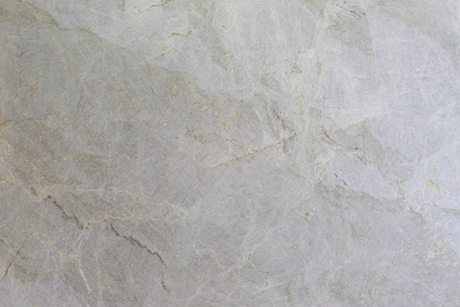A couple of years ago, I gave a seminar at the Paradise Valley, Arizona Design Center on “White Kitchens” and the prevalence across the board in all design styles to lighten up kitchens and go with variations of white cabinetry and even white countertops. Now, 2 years later, that trend has not lost momentum. As a designer, I carefully watch design trends and cautiously avoid things that appear will be short-lived and look significantly dated in the future. (Many of us remember the Avocado appliances and carpets from the 60’s and 70’s and the Mauve color that was pervasive in the 1980’s!)
Well, white seems to be here to stay, and I can’t say I disagree. It’s a fresh, clean look (appropriate around food prep), it works well with any accent color, it can be dressed up or dressed down, and there are a myriad of options in various surfaces in a kitchen environment to blend with, or contrast to it. Here are a few of the areas that I like to use white surfaces in a kitchen, and the materials I think work best:
Cabinets
Cabinets are usually the first thing my clients think about when they are imagining what their new kitchen will look like. Cabinets are the “framework” of the kitchen and set the design stage for color and style. A slab (completely flat) cabinet door is usually considered to be contemporary and is all about the material it’s made of, whereas a very detailed raised panel door shows off the skill of the woodworker and often translates to a more transitional or traditional design style. Either way, variations of white finishes work well to create a light, bright feeling in a kitchen.

Raised panels and divided light glass uppers make for a soft traditional look in a white kitchen.
In a more traditional kitchen, we usually find ourselves using a variation of one kind of raised panel or another; there are a LOT of choices, depending upon the cabinet manufacturer we are purchasing from. A white finish in this case will undoubtedly be a painted finish on wood, but there again, you will find choices. A simple white paint is very clean and more transitional, whereas a white paint with a transparent glaze, or a dry brush technique over the paint gives a more antiqued look and starts to lean toward more traditional. NOTE: When I use the term “white”, I am not referring to a specific color of white paint; I am speaking generically of any finish on cabinets that is very light and could be called white or off-white or cream.In contemporary kitchens, there is a big increase in the use of Thermofoil cabinet doors for two reasons: 1) they now come in a large variety of cool textures (yes, 3-D textures!) that emulate wood or other organic materials, and 2) they are very reasonably priced. I wouldn’t suggest using a Thermofoil for anything other than a slab door, because somehow when the material wraps a panel door it loses its authentic look, and starts to remind me of plastic. But there are plenty of white choices in Thermofoils, so if that’s a look you like, you won’t have a difficult time finding one!
Countertops
The second most important material in the kitchen is the countertop material. If you are looking to really create a light kitchen, I like to keep the countertops AND the cabinets very light. The rage in the past 5-7 years in both contemporary and traditional kitchens has been the use of white marbles such as Carrara and various Calacatta marbles for an elegant and soft looking kitchen countertop.

White marble countertop with etched stains….might be a reason to avoid marble countertops in kitchens.
I, however, suffer from a strong dose of practicality in my design veins, and I simply cannot recommend white marble if you actually intend to use your kitchen for daily family cooking and/or if you can’t tolerate this look. Marble will etch, which is a physical reaction in the stone to acids in citrus fruits, tomato, wine, etc. It is not a simple fix to get the etching out. But if you’re set on the look of white marble in your kitchen, you might opt to have it honed, which at least camouflages the etch marks, since you are starting out with a dull surface and it won’t be as noticeable as etching on a polished surface.
So, as a natural material option to white marble, I might suggest a white natural quartzite or granite. Because I’m not the only one who loves natural white stone countertops but shies away from the inevitable etching, stone suppliers have miraculously come up with a myriad of new choices in the past few years. There are “whitish” granites and natural quartzites available now that are a beautiful way to get the look without the maintenance. While granite and quartzite are not completely impervious to staining, they go a long ways toward giving peace of mind in comparison to marble. The downside of granite is, that is almost always has a “speckled” look that is different from the gentle veining of a marble, so it is still a different look, even if it’s white.
Natural quartzite, on the other hand, is also extremely stain resistant and it can have beautiful movement…not really like the veining in marble, but a softer more elegant look than granite:

Taj Mahal natural quartzite has a beautiful, soft gray undertone.
And finally, the latest and most durable look in countertops, with a variety of whites to choose from, is a manmade, engineered stone called quartzite, from companies such as Caesarstone, Silestone, and other name brands. These slabs have the benefit of being completely predictable from a pattern point of view (as opposed to having to select natural slabs to avoid certain patterning you might not like, or hoping that the next batch that comes in looks like the one you fell in love with when you first started looking for countertop material!). They are extremely hard and durable, and require no sealing. Cost wise, they are not a particular “deal”, because including installation they come in around the midpoint of granite countertops, but they are an excellent choice if you are looking for dependability in color and pattern, as well as performance. I like to use them in more contemporary kitchens where I’m looking for less pattern and a less organic feel than granite.
I used to really focus on the color and pattern in the backsplashes of our clients’ kitchens as an important design element and a real statement maker. Recently, though, I usually find myself wanting the backsplash to add texture and to complete the design statement in the room, but not take center stage. In this regard, the backsplash is yet another area where it is possible to continue the white theme in the kitchen. Simple white or off-white subway tiles, maybe with an accent liner bar in a different material, or a mosaic in white marble can add just the right amount of texture and pattern to the kitchen. One note of caution, though, just because it’s not on the countertop doesn’t mean it can’t be stained. Be careful what you put on the wall behind your range or cooktop if you have a propensity to sling tomato sauce when you’re cooking! Think of having to keep that tile or marble, as well as the grout between all of the pieces, clean and be sure to have your backsplash well sealed!
Walls and Ceiling
If you are aiming for a “white kitchen”, then the walls have to be some version of white. The only darker exception to that might be a deeper neutral color, such as a taupe, that would create a shadow effect behind the white cabinets and create an interesting illusion of depth. But in my opinion, don’t ever consider actually adding an actual color unless it is very, very soft.
Ceilings, however, are slightly different. One of the prettiest things in a white kitchen is to feature beautiful wood beams in the ceiling, whether they be newly fabricated or reclaimed. The warm, natural wood texture is a great counterpoint to the cool “white” surfaces below. In this kitchen we designed a few years ago, the beams are a great accent, especially since they are on such a high ceiling and create warmth and interest, and the wood floor compliments the warmth of the beams and grounds the space.
Floors
In a “white kitchen”, the one thing I wouldn’t do in white is the floor. Not only is it impractical in terms of showing spots, crumbs and pet hair, but it does nothing to ground the space and create a feeling of warmth and hospitality. Referencing the attached photo of our client’s kitchen, imagine how cold and uninteresting a white floor would be in that space!
Appliances
Appliance fronts can be either stainless steel or integrated with the cabinets, depending on the look you are going for. We usually do stainless fronts in contemporary kitchens and integrated cabinet panels in more traditional kitchens, although there are situations that could go either way. Because there are certain things in a kitchen that pretty much HAVE to be stainless, such as a Wolf (our favorite) range and typically our sink faucets, stainless is actually a “neutral” color and blends beautifully no matter where you choose to use it.
Not that a White Kitchen has to be all white!
White is just a great color for kitchen finishes in general, because it speaks to lightness, cleanliness, and simplicity. But just because you choose white cabinets doesn’t mean ALL of the cabinets have to be white. It’s a stunning look to mix simple white cabinetry with some rich natural wood cabinets. The contrast is pleasing to the eye, just like wood beams add a great architectural element to a white kitchen. I would say especially if you don’t have beams in the room, the addition of some wood cabinets or even a wood butcherblock countertop to a certain area in the kitchen will add needed contrast and will bring the overall look of the kitchen to a higher level of design.
I’ve only touched on some basic aspects of the kitchen, considered by many to be the most important room in the home! There is still so much to talk about in terms of choices for other things, such as countertop edge details, the height of cabinet toekicks, how tall your upper cabinets should be, great faucets, new appliances for the kitchen, and of course…lighting. Look for another blog on these subjects soon!



